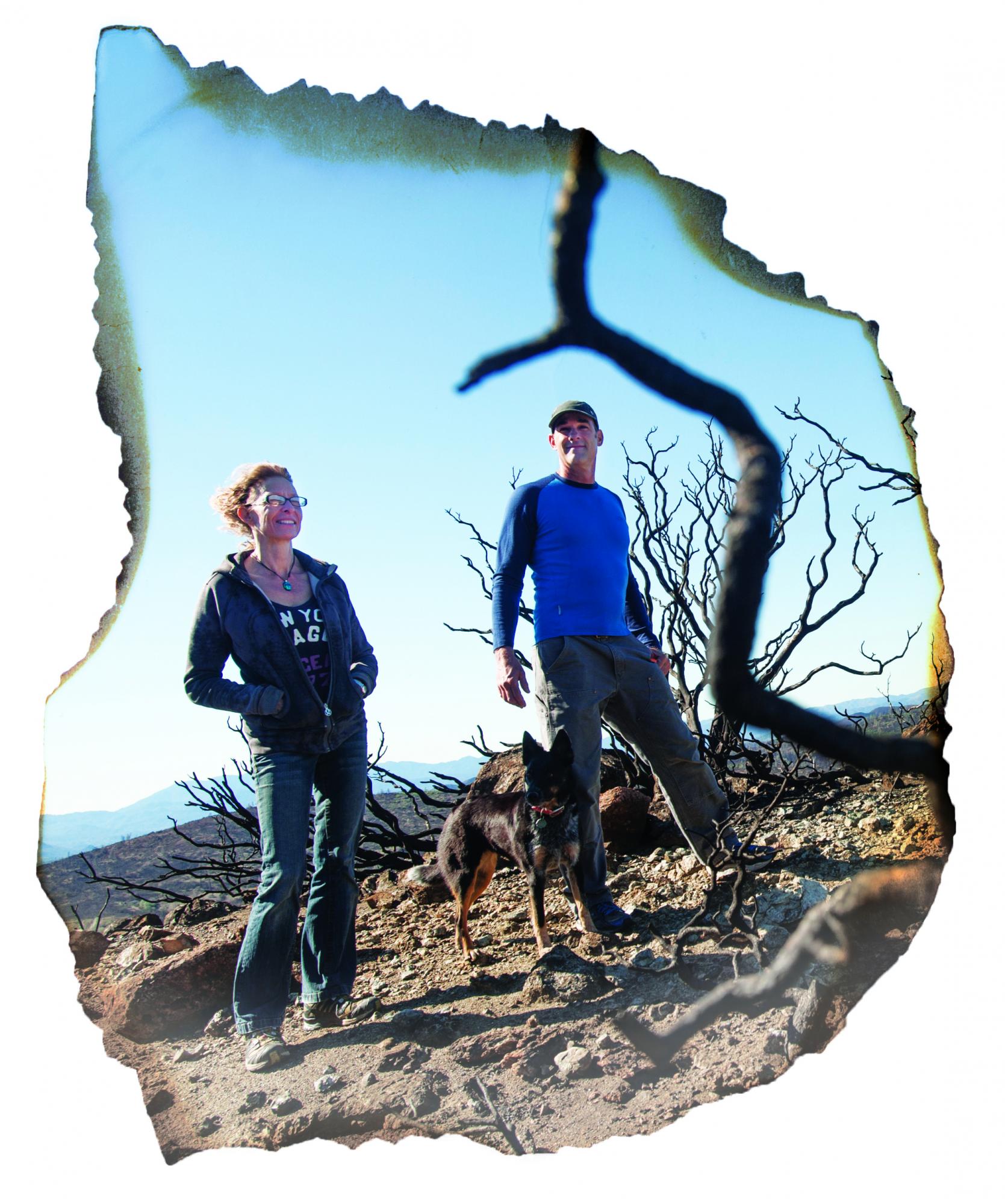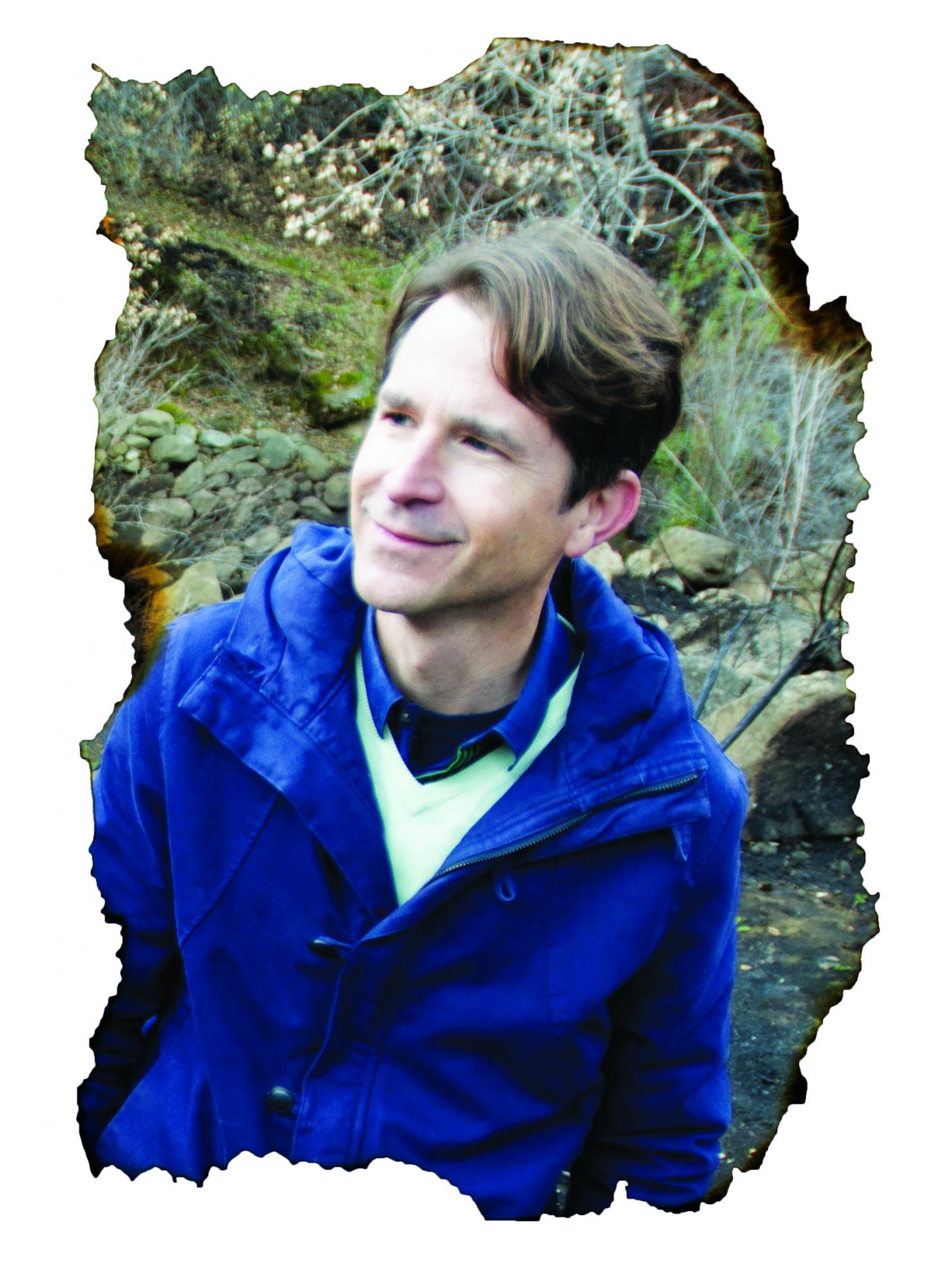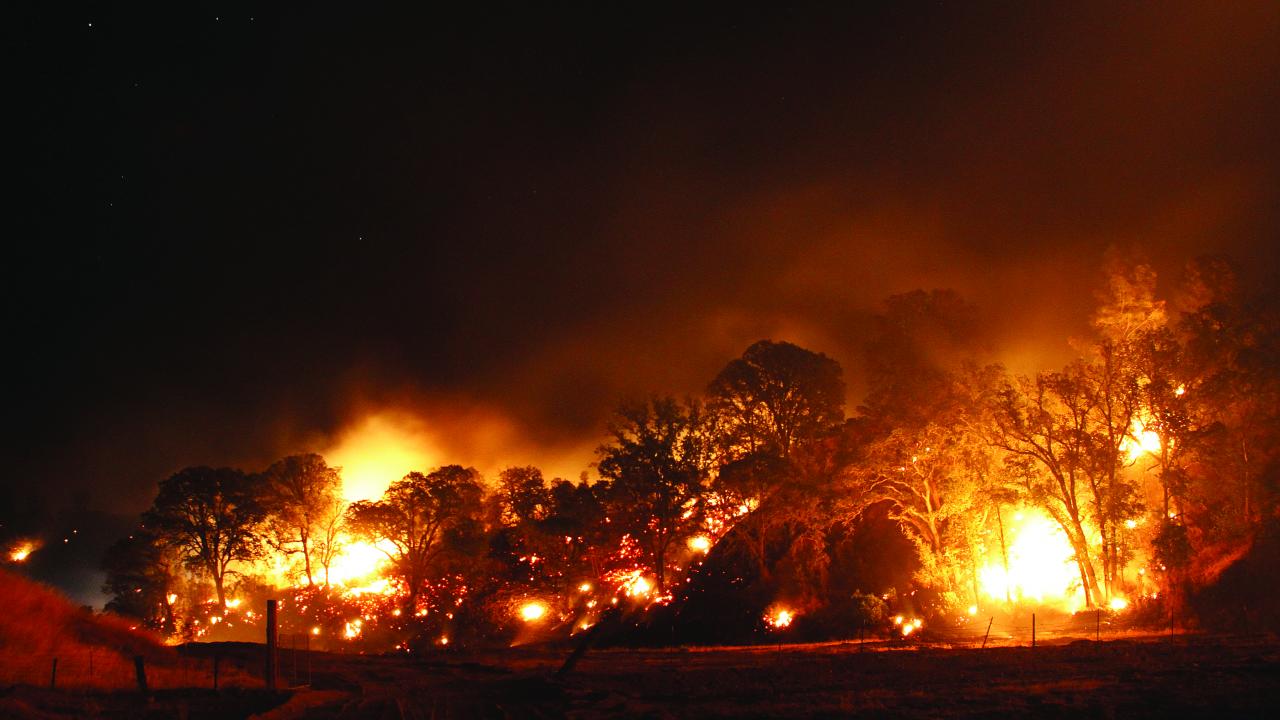When wildfire ripped through two UC Davis natural reserves last summer, scientists conducting research there first took a pained look to see if their months or years of research just went up in flames. Then they did what one would expect from scientists: They began to study the effects.
Wildfires burned a record-busting 10.12 million acres in the U.S. in 2015. Among the first lands ignited that dry, hot summer were Stebbins Cold Canyon Natural Reserve, just 30 minutes west of Davis, and Donald and Sylvia McLaughlin Natural Reserve, two hours northwest of campus. These lands have served as outdoor labs and classrooms for decades.
Since the fires, researchers have started comparing before-and-after data on everything from wildflowers and insects to the impacts of climate change on species recovery.
Such research is expected to become increasingly relevant as the trend of warmer, drier climates and hotter, more intense fires continues across the state and world.
Saving science

There’s one thing Cathy Koehler wants to set straight: Fire is not “devastating.” At least not from an ecological perspective. It’s simply a part of life in this area of the world.
She and her husband, Paul Aigner, are co-directors of McLaughlin Reserve, where they have lived for 13 years.
A former gold mining site, the reserve stretches across 7,000 acres of grassland, woodland and chaparral habitats.
It is revered by scientists as one of the few places on the planet where serpentine soils — which give rise to rare and endemic plants able to tolerate extreme soil conditions — sit side by side with “normal” soils. This makes comparison experiments between radically different soils in a natural environment fairly easy to arrange.
Koehler and Aigner know McLaughlin’s nuances, nooks and crannies. They know where to find different patches of vegetation and where wildlife lives. And they can locate every experimental plot — down to a patch of plants along a side road.
So when, one after the other, the Rocky, and then the Jerusalem fires came raging through in late July and into August, the couple stayed. The reserve field station, which is well-protected from fire, became a staging area for the firefighters and a community refuge. Koehler and Aigner looked at the swirling flames coming over the hillside in awe, not fear.
“It was spectacular,” Koehler said, eyes wide with excitement and wonder at the memory. “Whenever a fire occurs, we drop everything and monitor the activity. Every summer, you have to expect that possibility.”
In some cases, the couple saved scientific experiments themselves by dousing nearby areas with water. But mostly, they helped the firefighters respond in the least intrusive way possible for the environment and the scientific experiments underway.
For example, the co-directors helped firefighters find existing firebreaks instead of bulldozing lines across natural lands. This helped spare experiments and sensitive habitat—places that would recover from fire but not necessarily from the disturbance of a bulldozer line.
On a dirt road inside the reserve last winter, fresh deer tracks dotted the mud. Koehler pointed to a series of pin flags in the distance. They marked some of environmental science and policy professor Susan Harrison’s experimental plots, where research equipment would have been lost in the firefighting effort if not for the reserve directors.
“More and more, I feel like I couldn’t do anything I do without the reserves,” Harrison said. “Reserve staff played an essential role in setting up a watering system for my climate study. And with the fires, Paul and Cathy not only protected these rare serpentine meadows, they saved experiments out there.”
Harrison studies the resiliency of ecosystems under climate change. She’s been studying 80 grassland sites annually at McLaughlin for almost two decades, and 39 of them were affected by last summer’s fires. Now Harrison is studying how quickly grassland plant species recover after fire.
She’s not the only one viewing the fires as a new research opportunity.
Graduate student Moria Robinson is looking at how insects regenerate on plants after fire. Before the fires, she’d spent two years at McLaughlin collecting caterpillars to study food-web interactions among soils, plants and insects. The fires burned many of the plants where she’d been gathering specimens.
“McLaughlin is a place that’s become a big part of my life, where I love being,” Robinson said. “I’ve become connected to the landscape. So it was hard to see it change.”
But while Robinson initially focused on what was lost, her adviser, UC Davis professor of ecology and evolution Sharon Strauss, helped her see what an asset two years of data on plants and insects before the fire could be for a post-fire comparison.
As the wildfire season now gives way to the wildflowers, Robinson said she’s more excited for a field season than she has been in a long time.
“Once I started reading about fire ecology, I realized there are a lot of neat questions we can ask,” she said.
Wragg to riches
A faint buzzing sound came from atop a slope at Stebbins Cold Canyon Reserve this past winter. Graduate student Jordan Carey was flying a white drone above the hill taking aerial images. Forecasters predicted a wet winter, and he was studying how rock, mud, leaves and other debris flow down steep slopes and into streams after a fire. The data could be used to inform hazard debris flow models for urban areas, like Los Angeles.
Carey hadn’t considered doing this project until the combination of the fires and an El Niño winter presented itself.
“In populated areas, debris flows present the potential for loss of life and hazards,” Carey said. “Obviously that’s not the case here, but this is a good place to study it.”
The Wragg Fire was ignited a few hundred yards from the edge of Stebbins Cold Canyon Reserve on July 22, 2015, putting the reserve first in its path. It ripped through, burning cottonwoods, thick patches of chaparral, iconic blue oaks and railroad ties built into the trail. It even vaporized the reserve’s one Porta-Potty.

Before the fire, Stebbins was a verdant canyon, punctuated by a ridgeline looking over Lake Berryessa. The Berryessa Snow Mountain National Monument was designated just 12 days before the Wragg Fire’s first spark. Stebbins is used by entomologists studying native bees and ants, veterinary researchers studying parasites and disease vectors on wildlife, and many other scientists.
The UC system has 39 natural reserves, and very few of them are open to the public. Stebbins is one of those rarities. Students from local schools visit for outdoor education, and the public takes advantage of what is arguably the area’s most popular hiking trail. With the advent of social media, the once sleepy local secret now receives nearly 65,000 visitors a year. The reserve temporarily closed after the fire but reopens in May.
“It is emotional, in its way,” reserve director Jeffrey Clary said of the fire. “I’m a scientist, and I know that fire is part of the cycle. But at the same time, I spend a lot of time here and get to know the individual trees. There are all these nighttime photographs of the wildlife, of the gray foxes and the wood rats. I’ve seen their footprints. So you have to think about what’s happened to all of them.
“But then what really kicks in is getting to see this kind of rebirth process and all the science that’s getting to happen because we’re here, so close to campus. We can get out right away and learn something from this. We can make all of California better positioned to deal with these big disturbances.”
For now, the reserve is recovering. Signs of rebirth are everywhere. New life grows beneath charred shrubs and trees. Green seedlings emerge from blackened earth. Life, insistently, goes on.
And yet questions remain: What will the future forest look like under a changing climate? And how should we as humans prepare for it and respond to it?
“We’re going to learn a lot, and some of it is going to be troubling,” Clary said. “It’s one thing for a fire to happen. It’s another for it to be documented so that everyone gets to learn from it.”
This article appears in the spring 2016 issue of UC Davis Magazine.
Media Resources
Kat Kerlin, 530-750-9195, kekerlin@ucdavis.edu
